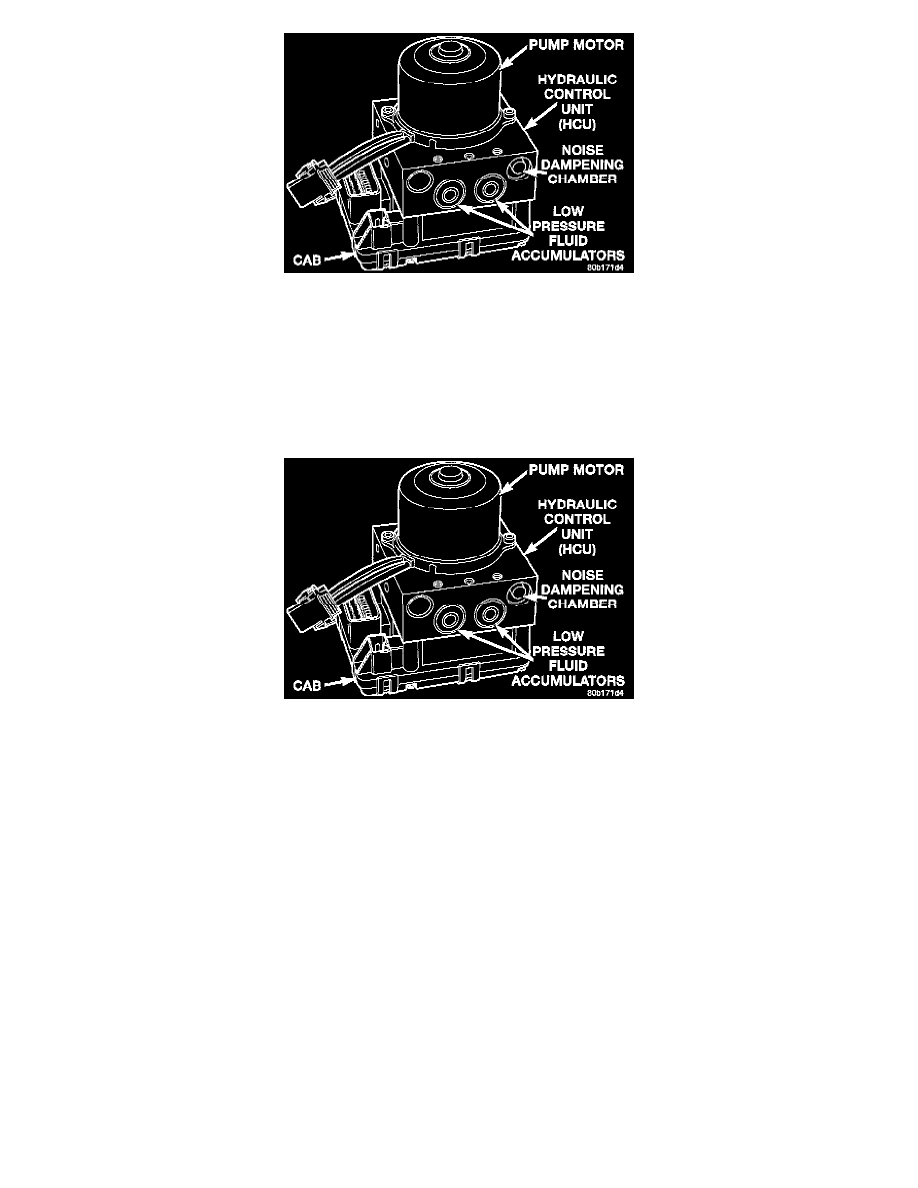300M V6-3.5L VIN G (2000)

Teves Mark 20 ICU
There are two fluid accumulators in the HCU-one for the primary hydraulic circuit and one for the secondary hydraulic circuit. Each hydraulic circuit
uses a 5 cc accumulator.
The fluid accumulators temporarily store brake fluid that is removed from the wheel brakes during an ABS cycle. This stored fluid is used by the
pump/ motor to provide build pressure for the brake hydraulic system. When the antilock stop is complete, the accumulators are drained by the
pump/motor.
PUMP/MOTOR
Teves Mark 20 ICU
There are two pump assemblies in the HCU-one for the primary hydraulic circuit and one for the secondary hydraulic circuit. Both pumps are driven
by a common electric motor. This DC-type motor is integral to the HCU and is controlled by the CAB.
The pump/motor provides the extra amount of brake fluid needed during antilock braking. Brake fluid is released to the accumulators when the outlet
valve is opened during an antilock stop. The pump mechanism consists of two opposing pistons operated by an eccentric camshaft. In operation, one
piston draws fluid from the accumulators, and the opposing piston pumps fluid to the master cylinder circuits. When the antilock stop is complete, the
pump/motor drains the accumulators.
The CAB may turn on the pump/motor when an antilock stop is detected. The pump/motor continues to run during the antilock stop and is turned off
after the stop is complete. Under some conditions, the pump/motor runs to drain the accumulators during the next drive-off.
The pump/motor is not a serviceable item; if it requires replacement, the HCU must be replaced.
